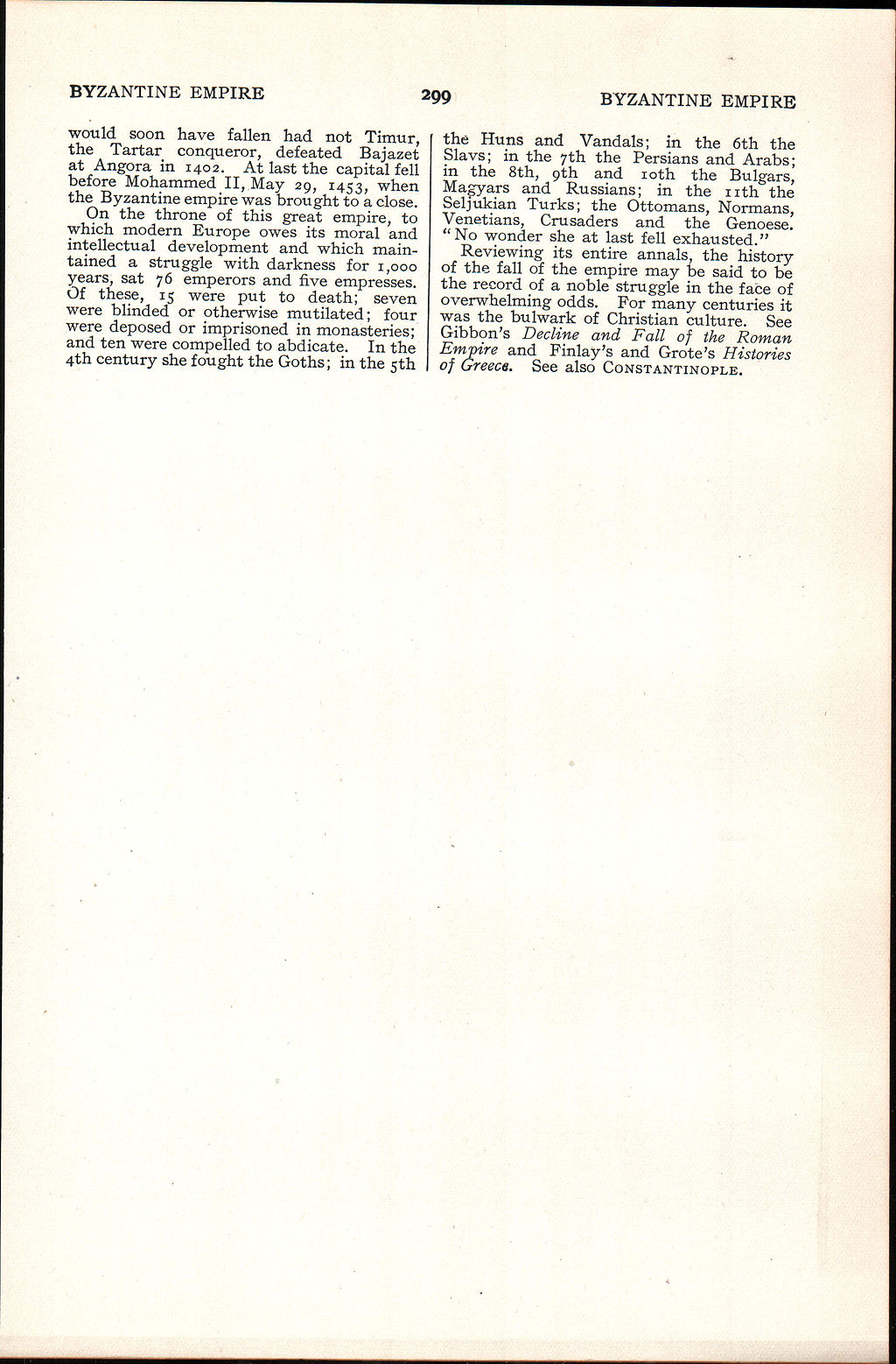Page 299 : BYZANTINE EMPIRE — BYZANTINE EMPIRE
Individual articles:
would soon have fallen had not Timur, the Tartar conqueror, defeated Bajazet at Angora in 1402. At last the capital fell before Mohammed II, May 29, 1453, when the Byzantine empire was brought to a close.
On the throne of this great empire, to which modern Europe owes its moral and intellectual development and which maintained a struggle with darkness for 1,000 years, sat 76 emperors and five empresses. Of these, 15 were put to death; seven were blinded or otherwise mutilated; four were deposed or imprisoned in monasteries; and ten were compelled to abdicate. In the 4th century she fought the Goths; in the 5th the Huns and Vandals; in the 6th the Slavs; in the 7th the Persians and Arabs; in the 8th, 9th and 10th the Bulgars, Magyars and Russians; in the 11th the Seljukian Turks; the Ottomans, Normans, Venetians, Crusaders and the Genoese. “No wonder she at last fell exhausted.”
Reviewing its entire annals, the history of the fall of the empire may be said to be the record of a noble struggle in the face of overwhelming odds. For many centuries it was the bulwark of Christian culture. See Gibbon’s Decline and Fall of the Roman Empire and Finlay’s and Grote’s Histories of Greece. See also Constantinople.
